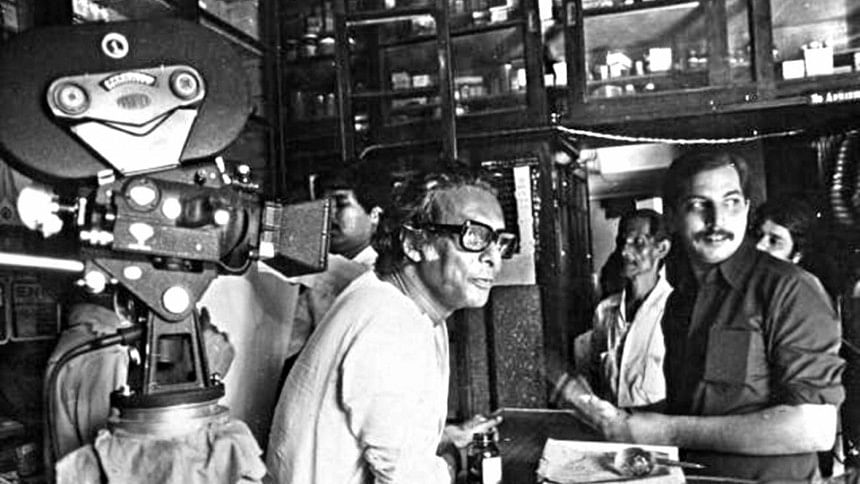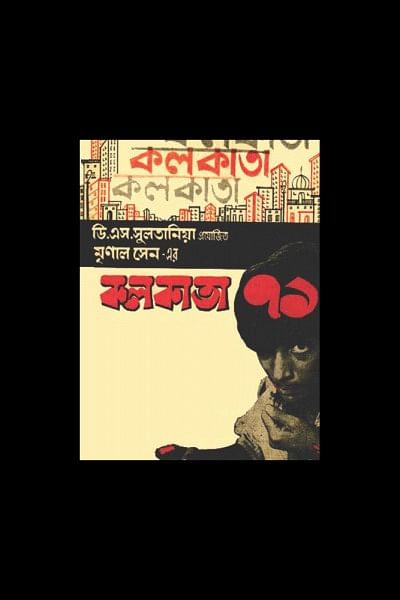Mrinal Sen & his “Post-Mortem” of the Postcolonial Bengali Middle-Class

I first watched Mrinal Sen's Interview (1971) during my undergrad years in an attempt to watch as many "intellectual" films from the campus library as I could. I appreciated it back then, for sure. I revisited the film upon hearing of the filmmaker's passing—at a different stage of my life when I am jobless and slowly assimilating into a different culture in order to gain employment, much like the film's protagonist, Ranjit Mallik. Second time watching, I really appreciated the film.
The story is simple—a young man loses a job opportunity with a foreign company due to his failure to arrange a suit for the interview. Yet, the simplicity represents something powerful. Through the metaphor of the suit, Sen reminds us of the ever so common colonial mentality that haunts the postcolonial middle class. Have we not heard of urban parks closing to people in lungis or of "clubs" forbidding visitors wearing sandals? Can any of you dare attend an interview in a Panjabi? The postcolonial society birthed from British imperialism still holds the benchmark up to its former oppressors.

The film begins with a scene of a colonial statue being taken down—much like the recent removal of confederate statues in the US, or of the Gandhi statue in Ghana—an exterior act of anticolonial resistance. Yet, the real decolonisation needs to occur within our minds. The film takes a dig at that—it culminates to Ranjit breaking the glass of a shop window and stripping a suit-wearing mannequin completely naked. Iconic. The jarring, upfront, almost documentary-like scenes in Interview breaks the fourth wall to address the structural barriers to success. An upset and enraged Ranjit Mallick talks back at the camera, "If I had some extra money, some saved-up money, four or five spare suits, a wardrobe, then tell me, wouldn't I have secured that job?" With the stripped mannequin, Sen strips the false subtleties of our unequal social structures. And he makes sure the audience is fully aware of his message.
Inclusion of a "reality check" was not uncommon in Sen's film. With several techniques, such as breaking the fourth wall, or freeze frames of news headlines, or sometimes inserting the filmmaker himself in some way within the narrative, he often reminded the viewers of the fragility of cinema. As soon as the audience immersed into the story, they were jolted back to confront that cinema is not a space of utopian realisation. Sen believed that cinema was, in fact, "the medium for social change" and so, viewers must be "called to action."

An avid Marxist, Sen was unapologetic about his film's ideological contents. Calcutta 71 begins with "[…] For thousands of years, I have been witnessing history: a history of poverty, of scarcity, of oppression," where "I" is the city of Calcutta. This theme and motif of the robust yet desolate city is recurrent in many of his films, often juxtaposed with documentary footage of strikes, street protests, Vietnam War, or a montage of news clippings contrasted with advertisements and billboards, etc. His clever use of the image provided a straightforward understanding of the milieu and its political bearings.
His films not only embodied themes of revolution, they eventually became part of it. In an interview with Calcutta Doordashan, he spoke of his film Calcutta 71 which was released amidst crackdown on Leftist activists during the Naxalbari movement of the late 60s. The families of missing or fleeing activists, who were unable to do much at that point, filled the cinemas to watch the film. Sen said, "All the three shows [of my film] in the largest, centrally-located theatres in Calcutta were full for twelve continuous weeks […] It was almost like the people [were] buying tickets to attend a protest meeting."
In Patadik (The Guerilla Fighter), he went straight ahead and told the story of a Naxalite in hiding. But unlike the preceding Interview and Calcutta 71, Padatik turned a self-reflexive eye onto the movement itself.

The protagonist, a fugitive forced into isolation, uses that time to reflect on the rigid establishment politics of Leftist organisers and the abuse and exploitation created by that structure. But Sen was careful not to delegitimise the movement. He said, "We were very aware that the line between self-criticism and slander is very thin. We were not trying to slander the movement, but to be self-critical in the form of reappraisal." The film's contemplative and sombre approach to the political psychology of a movement is resonant of Robert Bresson's aesthetic overture, while its cinematic technique is similar to that of Jean-Luc Godard, two French filmmakers whom Sen admired and repeatedly referred to throughout his career.
His later films, notably The Absence Trilogy—Ek Din Pratidin (And Quiet Rolls the Dawn), Kharij (The Case is Closed), Ek Din Achanak (One Day Suddenly)—marked a distinct trajectory in his style which forayed into heightened interiority and existential nihilism. Sen critiqued middle class morality by exposing its doublespeak.

In the 1980 drama Ek Din Pratidin, the family's eldest daughter, the bread-winner of the household, goes missing for a night. The family breaks into a frenzy as they wonder what had happened. The film thrives on the evolving, delicate interpersonal interactions between the characters. A patriarchal anxiety looms throughout the plot and the neighbours start questioning the character of the daughter, with occasional interjections by some of the minor characters.
Like in Interview, Sen's ideological groundworks is in his masterful endings. The audience never gets to know where the eldest daughter went that night. But the real question is, is it even important? Why? Because it will allow us to defend the situation? How different are we, then, from the family's neighbours? The eldest daughter, upon returning in the middle of the night, feebly cries, "Do I have no say in this?" The story never resolves itself further, leaving the audience in utmost discomfort—absolutely barring them from taking a moral high ground.

In Kharij, the death of a couple's servant boy drives them into hysteria as they figure out an escape route from the crisis. With the couple, Sen exposes the underlying class antagonism prevalent in our society. The beautifully crafted end scene shows the boy's father paying respects to the couple instead of being enraged. There is no justice. Sen said in an interview, "We were engaged in doing a post-mortem of society… my militant friends thought that now the boy's father will give a slap to the employer. And that way, our spectators would've been very happy. But this is a kind of wish fulfilment. And since they enjoyed seeing it, they would think that their revolutionary task is finished—so status quo would be maintained." And thus, Sen again deprived the audience of a closure, hoping that a revolution will be stirred out of their inability to reconcile with the narrative.
While open about his political intentions, the filmmaker was also consciously self-critical of himself, of his ideology, and of his craft. Perhaps nothing better illustrates this than Akaler Sandhane (In Search of Famine) which is a meta-film so to speak. A film crew, much like his own, visit a remote village to recreate the Bengal Famine of '43. This premise eventually questions the director's own position during a film production. It points a finger at urbanites who extract benefits from the conditions of rural, lesser incomed villagers, only to retreat into their comfortable city lives—perhaps an early example of what we now recognise as voluntourism and parachute journalism.

In terms of form and content, Sen was fearlessly experimental. He wrote in his book, Montage: Politics, Life, Cinema, "And, for reasons of my own, I henceforth made it a point to constantly break new ground, cast off the shackles of conformism and evolve new modes of expression." While Sen's radical cinematic vision led to international critical success, his political associations led to exclusion from several programming and festivals at home—most recently, the cancelled retrospective of Sen's films at 2016 Kolkata International Film Festival.
With Sen's passing, legends and luminaries of generations past, his peers and friends, are writing his obituaries—only fitting for such a real filmmaker. But for me, a millennial new-gen to write one only goes on to prove Sen's contemporaneity with today's problems. When I watch his cinema, I do not do so with a lens of nostalgia or with an introspection of the past. The indifference of the middle-class, the ghost of colonial oppression, frustrations with joblessness—none of that has faded away with the new millennium. If anything, it may be getting worse. The social function of his cinema remains unrealised. And thus, Sen is relevant as ever. His cinematic and political philosophies are one to keep re-emerging in the hearts of young people who seek to (dis)engage with cinema. With that, we bid adieu to the maestro, the last of the holy trinity of Bengali filmmakers.
Sarah Nafisa Shahid is a writer and art critic. Follow her on Twitter @I_Own_The_Sky for more art and film commentary.

 For all latest news, follow The Daily Star's Google News channel.
For all latest news, follow The Daily Star's Google News channel. 



Comments